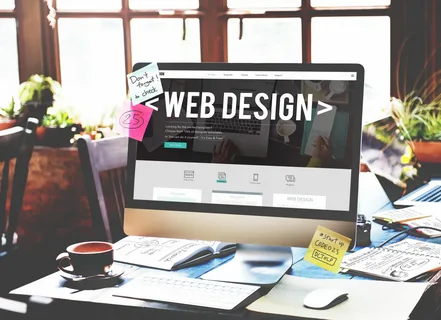Want to learn web design but don’t know where to start? Don’t worry – you’ve come to the right place! Web designing can be daunting, especially when so many different tools and techniques are involved.
But it doesn’t have to be so overwhelming. In this article, we’ll talk about the basics of web designing, and break down the concepts into easy-to-understand chunks. We’ll cover everything from selecting colors and fonts to using HTML and CSS for coding your designs. At the end of it all, you’ll have a better understanding of how web design works, and hopefully, even more motivation to start mastering the craft! So let’s get started on understanding the fundamentals of effective web design.
Planning Your Website Structure and Content
There’s an old saying that goes “failing to plan is planning to fail,” and it couldn’t be truer regarding web design. Before you do anything else you need to decide what your website will contain, how your pages should be structured, and how visitors will navigate the site.
This entails knowing the purpose of your website, who your target audience is, the content you’ll need to include, and the overall look and feel of your website. Think carefully about each element to devise a plan that meets your requirements efficiently and effectively. To get started:
- Figure out what topics or services you want your website to cover
- Decide how much content is necessary for each section
- Establish a logical hierarchy for the content on each page
- Make sure all pages are interlinked for easy access by visitors
Creating a well-thought-out and organized website structure will give you a roadmap for designing the rest of your site. Once you know where everything is going, it’s much easier to get it there!
Using Whitespace and Layouts Effectively
When it comes to web designing, nothing beats the fundamentals. Knowing how to use the fundamentals correctly is what will help you create a stunning website. One of the most important fundamentals to master is whitespace and layouts.
Whitespace—also known as negative space—is an integral part of any design because it helps create balance and legibility by emphasizing the content that matters most on the page. It also helps break up content into digestible chunks, making it easier for visitors to scan and find the information they’re looking for.
It’s important to remember that effective web design isn’t just about creating a visually appealing site—it’s about creating an intuitive experience that brings people together with your product or service in an enjoyable way. By focusing on the basics like whitespace and layouts, you can create an experience that users will find unique and memorable.
Navigating Users With Clear Menus and CTAs
When it comes to creating a great user experience on your website, clear menus and calls-to-action (CTAs) play an essential role. The goal is to make navigating through your website easy and intuitive, while also directing users to take the desired action whether that’s signing up for a newsletter, making a purchase, or downloading content.
Clear Menus
Menus should be simple and concise — don’t add too many items. Use only one or two levels of navigation at most, and make sure they are intuitive enough so users can easily find what they are looking for. Consider using dropdown menus for longer lists, to keep the main navigation bar uncluttered.
Calls-to-Action
Start by deciding what action you want visitors to take on your website — this will determine which CTAs you need to have on your pages. Then you can select an appropriate design for the CTA itself – make sure it stands out from the rest of the text on the page and that it’s visible.
Optimizing Images and Media for the Web
When it comes to web design, optimizing images and media for the web is key. After all, your site’s speed and performance depend on it. It requires a few basic steps:
Resizing
Resizing your images and media can be done using image editing software like Photoshop or Gimp. You want to make sure they are only as large as they need to be. If you make them too big, they will take up too much space on the page, which could slow down loading times.
Compressing Files in Web Designing
Compressing files not only helps with page speed but also reduces file sizes without sacrificing quality. There are many tools available such as TinyPNG or Squoosh that can help compress image files quickly and easily.
Optimize for SEO
When optimizing images for SEO, it’s important to include descriptive file names and alt text that accurately describes the image for search engine crawlers. This way, your site will get a better ranking on search engine results pages which will help drive more visitors to your website.
By taking the time to optimize your images and media for the web, you’ll ensure that your website loads quickly and performs optimally for visitors. Not only that, but you’ll also benefit from improved SEO rankings which will help drive more traffic to your website in the long run.
Conclusion
When it comes to web design, the fundamentals are key. Using the right color palette, developing patterns to help drive user engagement, and ensuring a feeling of ease and fluidity, all help create a successful, user-friendly site.
The key takeaway from this article should be to focus on the fundamentals: color, layout, typography, and usability, and use them to create a site that is a pleasure to use.
So, if you’re looking for ways to make your website stand out from the competition, mastering the fundamentals of web design is a surefire way to get results. With a little practice, you too can create a beautiful, user-friendly site that will keep your visitors engaged.

